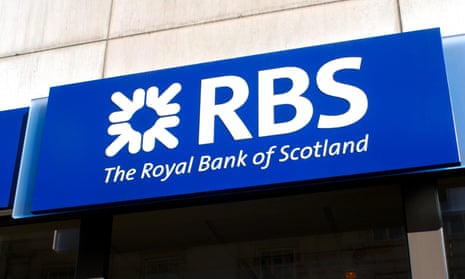Royal Bank of Scotland is to start charging major financial institutions for any cash it holds on their behalf for trading purposes, in the latest illustration of the impact of Mark Carney’s post-Brexit vote stimulus package.
It is the first time a bank has started to make charges for sterling deposits since the governor of the Bank of England announced on 4 August that interest rates would be cut from 0.5% to 0.25% to stave off any economic downturn following the vote to leave the EU. Carney said he was not a fan of negative rates.
Even so, from Monday, about 70 RBS customers will start to receive negative rates because they will charged for any cash they place as collateral for trading in complex financial products, such as futures or options. The move will not affect the small business customers whom the bank, and its NatWest arm, warned last month it may have to charge for making deposits.
Negative rates, though, will be applied for customers who trade through RBS on deals guaranteed by clearing houses. RBS is 73% owned by the taxpayer.
An RBS spokesman said: “Until recently, RBS has applied a 0% floor to the overnight rate charged for deposits required by clearing houses for futures trades. However, due to the sustained low interest rate environment, RBS will now be passing the cost of holding such deposits on to a limited number of our institutional clients. Futures are entered into by sophisticated financial investors looking to hedge risk.”
While the rate cut has reduced borrowing rates for mortgage customers, savers are paying a price.
“We are still a long way from banks imposing negative interest rates on personal customers, which would be a deeply unpopular move, though clearly the direction of travel is concerning for savers,” said Laith Khalaf, senior analyst at Hargreaves Lansdown.
A table of savings rates compiled by Savings Champion, a consumer website, shows the lowest rate offered at 0% by specialist bank Weatherbys for a 45-day and 90-day notice account. Other accounts are offering 0.01% – such as that offered by Danske Bank – while Barclays on Friday announced it would cut its “everyday savers” rate to 0.05% on 1 December.
The rate was previously 0.25% on this account although Susan Hannums of Savings Champion said Barclays was transferring some savers to this account who had previously been getting 1%. “This means the savers who originally were in the [previous account] will see their rate drop from 1% to 0.05% in less than 2 months,” said Hannums. The rate was for customers who joined Barclays when it bought the UK arm of ING.
Barclays joined other banks – such as HSBC’s First Direct – in passing on a cut to savings rates that was larger than the Bank of England’s quarter point reduction. For instance, the rate on an instant cash ISA will fall from 0.8% to 0.4%.
It was reported on Friday that the Bank of Ireland, which is 14% owned by the state, will charge big companies 0.4% to place deposits overnight. Rates are negative in the eurozone.

Comments (…)
Sign in or create your Guardian account to join the discussion